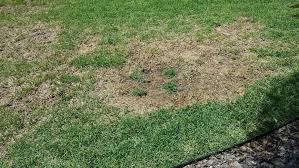 Having problems getting that high-quality lawn you crave? Before you start spending serious money on new equipment and care, make sure you aren’t making one of these common, easy-to-fix mistakes.
Having problems getting that high-quality lawn you crave? Before you start spending serious money on new equipment and care, make sure you aren’t making one of these common, easy-to-fix mistakes.
Cutting Too Much Grass
The shorter you cut your grass, the less often you have to mow. However, trimming the blades down to the ground can severely hamper growth, keeping the grass from getting enough light and water to develop the root system. Each grass variety has a height that it grows best at, but in general warm weather grasses like to be around two inches tall, while cold weather grasses are at their best when they’re an inch tall. Trimming a maximum of one-third of the blade length will make mowing easier on the grass.
Fertilizing without a Soil Test
While you may get some results buying some off-the-shelf fertilizer, you can get a lot more from nutrient treatments if you know what your lawn needs. A soil test will tell you the acidity of the soil so you can correct it using sulfur or lime, raising or lowering the pH to an ideal 6-6.5. If the soil is already in good shape, it’s easy to over-fertilize. This can add too many nutrients, leading to poor root structure from high salt content or browning grass from excess nitrogen.
Using Only One Type of Grass Seed
Mixing cold and warm weather varieties keeps the turf green longer each year, and using a combination of seeds balances out their growth traits so your lawn will survive severe conditions including drought and high heat.
Using the Wrong Grass
Some grasses like full sunlight, while others grow better in the shade. Some can withstand heavy wear, while others fall apart when tread upon or when trying to grow in compacted ground. Some grasses will be green for much of the year in one climate but will remain brown in another climate. Before you plant, contact your local extension office to find out which varieties will work best at your location.
Using a Dull Blade
A mower blade only needs to be as sharp as a butter knife to cut effectively, but over time it can become blunted, beating grass down instead of slicing through it. There’s no set interval for sharpening because local conditions can vary a lot, changing the amount of wear your blade experiences. However, using your mower to cut up plugs from core aerating is so hard on the blade edges that they will need sharpening before you mow again.
Bagging
Bagging can keep damp clippings off of your lawn and can be used to halt the germination of some weeds, but it also removes nutrients from the soil. By mulching your lawn, you can keep the nitrogen extracted by the leaves available to the grass.
Overwatering
Under most circumstances, a lawn needs just an inch of water per week, and it needs that water spaced out in a way that allows it to be absorbed by the soil. Ideally, watering should be split into thirds to provide enough water to prevent evaporation while also being absorbed fast enough to keep it from running off.
Having Too Much Shade
Even though there are shade grasses, getting a perfect lawn means getting plenty of sunlight. If you’re more concerned about your lawn than you are decorative plants, scale back on the landscaping so the grass can get the sun it needs.
Skipping Maintenance
Even something as simple as a clogged clipping bag or a dull blade can ruin the finish left by your lawn mower. When you need parts to service your Honda lawn equipment, visit www.hondalawnparts.com. We’re a certified dealer carrying everything you need for their motors, mowers, and more, and we can ship both parts and accessories across the U.S. and Canada.
